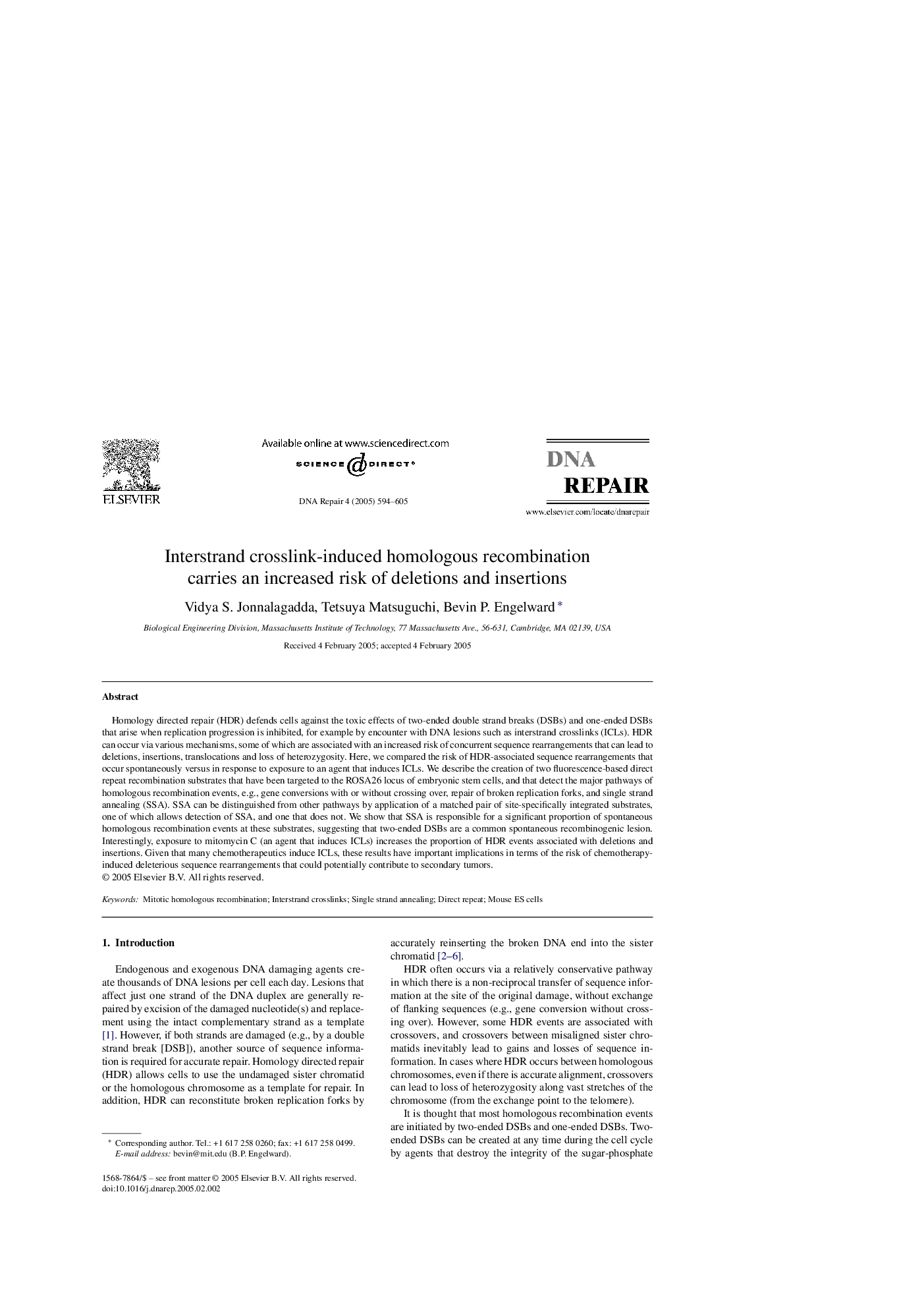| کد مقاله | کد نشریه | سال انتشار | مقاله انگلیسی | نسخه تمام متن |
|---|---|---|---|---|
| 10823668 | 1061918 | 2005 | 12 صفحه PDF | دانلود رایگان |
عنوان انگلیسی مقاله ISI
Interstrand crosslink-induced homologous recombination carries an increased risk of deletions and insertions
دانلود مقاله + سفارش ترجمه
دانلود مقاله ISI انگلیسی
رایگان برای ایرانیان
کلمات کلیدی
موضوعات مرتبط
علوم زیستی و بیوفناوری
بیوشیمی، ژنتیک و زیست شناسی مولکولی
زیست شیمی
پیش نمایش صفحه اول مقاله

چکیده انگلیسی
Homology directed repair (HDR) defends cells against the toxic effects of two-ended double strand breaks (DSBs) and one-ended DSBs that arise when replication progression is inhibited, for example by encounter with DNA lesions such as interstrand crosslinks (ICLs). HDR can occur via various mechanisms, some of which are associated with an increased risk of concurrent sequence rearrangements that can lead to deletions, insertions, translocations and loss of heterozygosity. Here, we compared the risk of HDR-associated sequence rearrangements that occur spontaneously versus in response to exposure to an agent that induces ICLs. We describe the creation of two fluorescence-based direct repeat recombination substrates that have been targeted to the ROSA26 locus of embryonic stem cells, and that detect the major pathways of homologous recombination events, e.g., gene conversions with or without crossing over, repair of broken replication forks, and single strand annealing (SSA). SSA can be distinguished from other pathways by application of a matched pair of site-specifically integrated substrates, one of which allows detection of SSA, and one that does not. We show that SSA is responsible for a significant proportion of spontaneous homologous recombination events at these substrates, suggesting that two-ended DSBs are a common spontaneous recombinogenic lesion. Interestingly, exposure to mitomycin C (an agent that induces ICLs) increases the proportion of HDR events associated with deletions and insertions. Given that many chemotherapeutics induce ICLs, these results have important implications in terms of the risk of chemotherapy-induced deleterious sequence rearrangements that could potentially contribute to secondary tumors.
ناشر
Database: Elsevier - ScienceDirect (ساینس دایرکت)
Journal: DNA Repair - Volume 4, Issue 5, 2 May 2005, Pages 594-605
Journal: DNA Repair - Volume 4, Issue 5, 2 May 2005, Pages 594-605
نویسندگان
Vidya S. Jonnalagadda, Tetsuya Matsuguchi, Bevin P. Engelward,